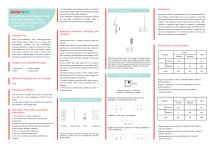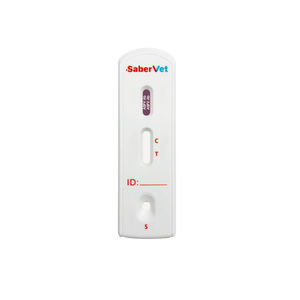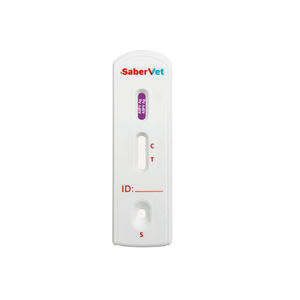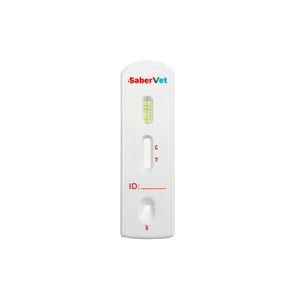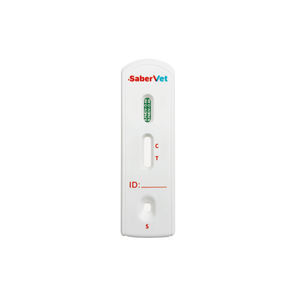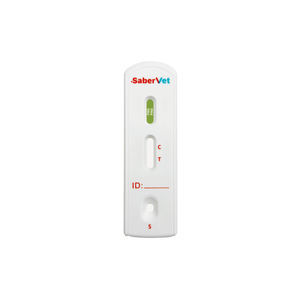
- Laboratory
- Laboratory medicine
- Rapid infectious disease test
- Hangzhou Antigenne Technology Co. Ltd
- Company
- Products
- Catalogs
- News & Trends
- Exhibitions
Rapid infectious disease test SaberVetveterinaryfor swineporcine circovirus
Add to favorites
Compare this product
fo_shop_gate_exact_title
Characteristics
- Applications
- for infectious diseases
- Application field
- veterinary
- Patient type
- for swine
- Micro-organism
- porcine circovirus
- Sample type
- urine, serum, plasma, feces, saliva, breath
- Analysis mode
- immunoassay, lateral flow
- Format
- cassette
Description
The Sabervet Porcine Circovirus Antibody Rapid Test is a lateral flow immunoassay intended for the qualitative detection of specific antibody from Porcine Circovirus (PCV) in porcine serum, plasma.
Description
Porcine Circovirus (PCV) is a common pathogen in pigs, mainly divided into Porcine circovirus type 2 (PCV2) and Porcine circovirus type 3 (PCV3), among which PCV2 is the main cause of porcine circovirus-associated disease (PCVAD).
Clinical signs and symptoms
PCV2
Post-weaning Multiple System Failure Syndrome (PMWS) :
Growth retardation: Infected pigs grow slowly and do not gain weight.
Emaciation and anemia: Significant weight loss, pale skin.
Dyspnea: Common respiratory symptoms, such as coughing and shortness of breath.
Diarrhea: Sometimes accompanied by diarrhea, resulting in dehydration and weakness.
Swollen lymph nodes: Swollen and necrotic lymph nodes are common.
Dermatitis and Nephrotic Syndrome (PDNS) :
Skin lesions: erythema, purple spots or necrotic lesions on the skin.
Kidney disease: Kidney enlargement, may lead to uremia.
Reproductive disorders:
Miscarriage and stillbirth: Miscarriage, stillbirth, or mummified birth may occur in sows.
Low piglet survival rate: The survival rate of newborn piglets decreased.
Transmission route
Direct contact:
From pig to pig: Spread through direct contact with the bodily fluids (saliva, urine, feces, etc.) of infected pigs.
Vertical propagation:
Sow to piglet: Vertical transmission across the placenta, resulting in sow to fetus or newborn piglet.
Exhibitions
Meet this supplier at the following exhibition(s):
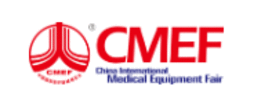
Other Hangzhou Antigenne Technology Co. Ltd products
Livestock
Related Searches
- Blood rapid diagnostic test
- Rapid lateral flow test
- Immunoassay rapid diagnostic test
- Cassette rapid diagnostic test
- Virus rapid diagnostic test
- Serum rapid diagnostic test
- Plasma rapid diagnostic test
- Infectious disease rapid diagnostic test
- Whole blood rapid diagnostic test
- Rapid respiratory infection test
- Urine rapid screening test
- Bacteria rapid diagnostic test
- Rapid feces test
- Clinical rapid diagnostic test
- Nasal rapid diagnostic test
- Obstetrical/gynecological rapid test
- Rapid oral flu test
- Dog rapid test
- Laboratory rapid diagnostic test
- Coronavirus rapid diagnostic test
*Prices are pre-tax. They exclude delivery charges and customs duties and do not include additional charges for installation or activation options. Prices are indicative only and may vary by country, with changes to the cost of raw materials and exchange rates.


